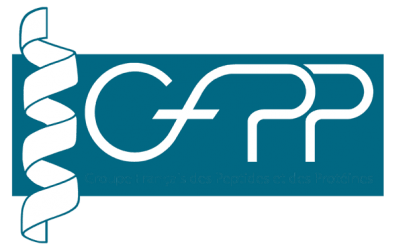
A pentaALFA peptide may be reacted with a SNAP- or HaloTag and allows for signal enhancement using fluorescently labelled nanobodies. Tagged and peptide/nanobody treated cell surface receptors give generally higher signal intensity using fluorescence microscopy and are amenable for stimulated emission by depletion (STED) super-resolution imaging.
ABSTRACT
Self-labelling proteins like SNAP- and HaloTag have advanced imaging in life sciences by enabling live-cell labeling with fluorophore-conjugated substrates. However, the typical one-fluorophore-per-protein system limits signal intensity. To address this, we developed a strategy using the ALFA-tag system, a 13-amino acid peptide recognized by a bio-orthogonal and fluorescently labelled nanobody, for signal amplification. We synthesized a pentavalent ALFA5 peptide and used an azidolysine for conjugation with a Cy5-modified SNAP- or HaloTag ligand through strain-promoted click chemistry. In vitro measurements on SDS-PAGE showed labelling, and the peptides covalently reacted with their respective tag. HEK293 cells expressing SNAP- and HaloTag-mGluR2 fusion proteins were labeled with ALFA5-Cy5 substrates, and confocal microscopy revealed a significant enhancement in the far-red signal intensity upon nanobody addition, as quantified by integrated signal density ratios. Comparisons between SNAP- and HaloTag substrates showed superior performance for the latter, achieving better signal-to-noise and signal-to-background ratios, as well as overall signal intensity in plasma membrane-localized regions. Our results demonstrate the potential of ALFA-tag-based systems to amplify SLP fluorescent signals. This strategy combines the photostability of synthetic fluorophores with multivalent labeling, providing a powerful tool for advanced imaging applications including super-resolution in cells. Its versatility is expandable across diverse protein systems and colors.


